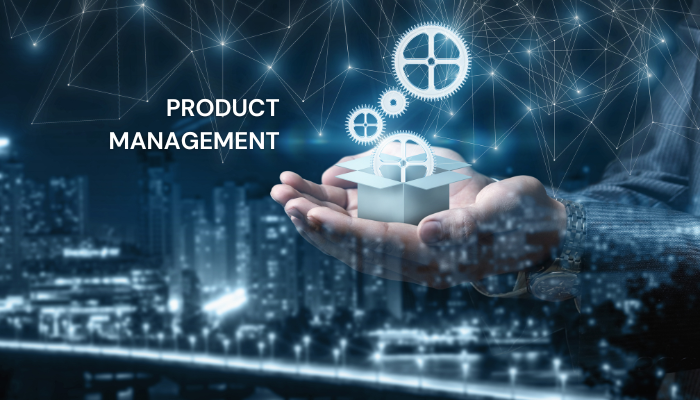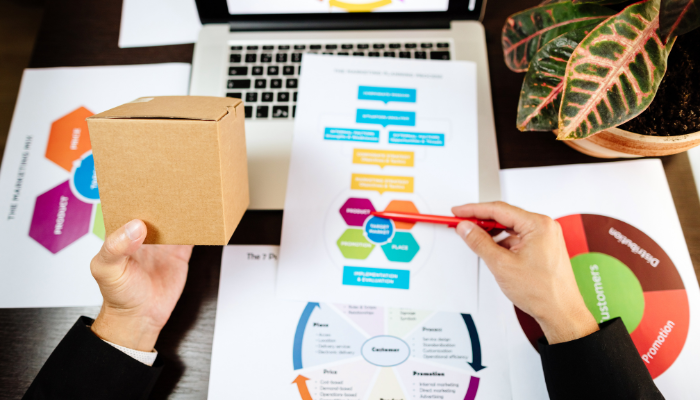Let’s be real—building a product is hard. You might have a killer idea that you know is going to change the game, but then comes the real challenge: turning that idea into something real that people actually love and use. Sound familiar? You’re not alone. Whether you’re a product manager trying to keep everything together or a startup founder juggling a million things at once, the pressure is real.
Here’s the thing—getting a product from brainstorm to launch can feel like running a marathon, but with hurdles you didn’t even know existed. Ever been stuck in endless meetings where no one can agree on the next step? Or watched a launch date slip through your fingers because of unexpected roadblocks? Yeah, we’ve all been there. The frustration is real.
But what if it didn’t have to be that way? What if there was a clear, step-by-step process that could keep things on track, make sure everyone’s on the same page, and help you avoid those nasty surprises along the way? That’s where we come in. At Codewave, we’ve cracked the code on how to take your product from “just an idea” to “this thing is changing lives”—all without the chaos.
In this blog, we’ll break down the 6 essential stages of product management—and how our unique approach at Codewave helps you get it right, every single time.
So, What Exactly is Product Management?
Let’s break it down: product management is basically the art (and a bit of science) of turning ideas into actual, usable products that solve real problems for people. It’s like being the coach of a sports team—you’re not the one playing, but you’re the one making sure everyone knows the game plan, stays on track, and works toward a win.
Imagine you’ve got this killer idea for an app or a product, right? Now what? You can’t just throw it out there and hope for the best. You need to:
- Define what it’s going to do—why should anyone care?
- Figure out how to make it happen—who’s building it, when will it be ready, and what’s it going to look like?
- Keep everyone on track—that means designers, developers, marketers, everyone, so it comes together smoothly.
- Launch it into the world, and then make sure it keeps running smoothly after it’s out there.
In short, product management is like being the conductor of an orchestra. You don’t need to play every instrument, but you do need to make sure they all work together to create something amazing. Without a good product manager, you risk launching something people don’t want—or worse, missing your market window altogether.
Good product management helps teams stay focused on delivering products that make people’s lives easier or more fun—without the chaos.
So, how do you actually get from an idea to a successful product? Let’s break down the 6 key stages of product management that will get you there.
Breaking Down the Product Management Process
1. Idea Generation and Discovery: Where It All Begins
Every groundbreaking product starts with a simple idea, but not every idea is worth pursuing. The Idea Generation and Discovery stage is where you sift through possibilities and begin identifying the concepts that can solve actual user problems. This phase isn’t just about creativity—it’s about strategic thinking and ensuring your product idea aligns with user needs and market demands.
At this stage, the goal is to gather input from various sources—users, market trends, and team members. You want to capture a wide range of ideas and then validate which ones are worth exploring further. A common challenge here is avoiding idea overload, where teams try to chase too many concepts, leading to confusion and misalignment later in the process. That’s why prioritizing ideas based on the problems they solve and the value they bring is key.
Techniques for Idea Generation:
- Brainstorming: Start with a broad, unfiltered idea collection. Think creatively and without constraints.
- Problem Identification: Identify which real-world problems your product is addressing.
- User Needs: Map ideas to user pain points. Does this idea solve a genuine need? Does it make life easier or more enjoyable for your target audience?
- Competitive Analysis: Look at the current market to understand if similar solutions exist and how your product will stand out.
Key Pain Points in This Stage:
- Too many ideas, no clear direction: Without structured prioritization, you risk spreading your team too thin.
- Misalignment: Teams often have differing ideas on what’s important, leading to disagreements later in development.
By the end of this stage, you should have a clear, user-centered idea that’s ready for further validation and development. The discovery phase ensures you’re solving the right problems and sets the foundation for a successful product journey.
2. Market Research and Validation: Separating Good Ideas from Great Ones
Once you’ve got an exciting idea, the next critical step is to test it against reality. The Market Research and Validation phase is where you determine whether your concept has the potential to succeed in the real world. This isn’t just about intuition—it’s about data, feedback, and understanding your audience deeply enough to know whether your idea will fly or flop.
This stage helps answer the big questions:
- Does anyone actually want this?
- Is there a market?
- Can we compete?
You’d be surprised how many ideas sound great on paper but don’t hold up once you start gathering data. Proper validation saves you from wasting resources on an idea that’s doomed from the start.
Methods of Market Research:
- Target Audience Definition: Narrow down who your product is for. Understanding your core users is essential—know their pain points, habits, and desires.
- Competitor Analysis: Look at existing solutions in the market. Are there similar products out there? What can you do better or differently? This helps you spot gaps where your product can stand out.
- Feedback Gathering: Engage with potential users early on. Surveys, focus groups, or interviews can provide insights that reveal whether your idea resonates with the people who matter most.
- Feasibility Study: It’s crucial to assess whether you have the technical and financial ability to build the product. If not, it’s time to rethink or refine the concept before moving forward.
Common Challenges in This Stage:
- Confirmation Bias: It’s easy to fall in love with your own idea, but make sure to validate it objectively with real user feedback, not just assumptions.
- Overlooking the Competition: Even if your idea is fresh, you’ll still need to convince users to switch from current solutions. Understanding your competitors’ weaknesses will help you better position your product.
By the end of this stage, you should have solid data backing your idea, confirming there’s a real need and an audience ready to engage. It’s not just about believing in your product—it’s about proving it’s worth investing time and resources into.
3. Planning and Strategy: Setting the Roadmap for Success
Now that you’ve validated your idea, it’s time to turn it into a reality. This is where planning and strategy come into play. Without a solid plan, even the best ideas can go off track. This stage is all about building a clear product roadmap, ensuring you know exactly what needs to happen and when, so you can stay focused, avoid scope creep, and hit your deadlines.
Think of this stage as setting the game plan. It’s about laying out your product’s goals, milestones, and timelines, and aligning them with your overall business objectives. What features are most important? What resources will you need? How will you measure success?
Key Components of Planning and Strategy:
- Product Roadmap: This is your high-level plan that outlines the features, milestones, and overall timeline of the product. It’s a living document that keeps everyone aligned and ensures the team knows where they’re headed.
- Feature Prioritization: Not all features are created equal. This is where you decide what’s most important and prioritize features that will deliver the most value to your users and business. A common pitfall here is trying to do too much at once—stay focused on the essentials.
- Resource Allocation: Planning isn’t just about features; it’s also about understanding what resources (people, time, tools) you need to bring the product to life. It’s crucial to balance ambition with what’s feasible within your budget and timeline.
- Risk Management: Identify potential risks early on—whether it’s technical, financial, or market-based—and create a mitigation plan. This helps you avoid being blindsided by unforeseen challenges.
Common Challenges in This Stage:
- Scope Creep: One of the biggest risks during the planning phase is trying to squeeze in too many features. Keep your focus on the core value your product provides and avoid overloading the roadmap.
- Unclear Prioritization: Without a clear system for prioritizing features, it’s easy to get lost in the weeds. You need to ensure you’re building the right things at the right time.
By the end of this stage, you should have a clear and realistic roadmap that outlines exactly how you’ll bring your product to market. This not only helps your team stay focused, but also ensures your stakeholders are on board with what’s coming next.
4. Design and Prototyping: Bringing the Vision to Life
With your roadmap in place, it’s time to move from planning to creating something tangible. This stage, Design and Prototyping, is where your ideas start to take shape visually and functionally. It’s not just about making things look good—this phase is about making sure that the product works and that it delivers the experience you want for your users.
Design isn’t just an afterthought. In fact, it’s one of the most critical stages of the product management process because it helps you define how users will interact with your product and whether it’s intuitive enough for them to use effortlessly. You’ll be creating prototypes, testing them, and iterating quickly based on feedback.
Key Components of Design and Prototyping:
- User Experience (UX) Design: Focus on how users will navigate your product. It’s about making sure the experience is seamless and doesn’t create frustration. What should users feel when they interact with your product?
- Wireframing and Mockups: This is where you sketch out the basic structure of your product, creating a wireframe to visualize the flow and layout before jumping into high-fidelity design.
- Prototyping: Prototypes are interactive versions of your product that let you simulate real user interactions. This helps you test the flow, identify pain points, and see where adjustments are needed before moving into development.
- User Testing: Once you have a prototype, gather feedback from actual users to see how well the design works in practice. You’ll learn what works, what doesn’t, and how to improve.
Common Challenges in This Stage:
- Over-designing: It’s easy to get carried away with aesthetics and overlook functionality. Focus on creating a design that solves user problems first, and looks great second.
- Skipping User Testing: One of the biggest mistakes is skipping or rushing through user testing. Without it, you risk launching a product that confuses or frustrates users.
By the end of this stage, you should have a validated prototype that reflects both the look and feel of your product, as well as how it will function. The goal here is to ensure that the product delivers on user needs and is intuitive to use before development begins.
5. Development: Turning Ideas into Reality
With a validated prototype in hand, it’s time to transition from design to development. This is where your product starts coming to life through code. The development phase is critical because it’s where all the planning and design work transforms into an actual working product. But it’s also where things can get complicated if there isn’t clear communication, prioritization, and a focus on delivering high-quality results.
The key in this stage is to keep development focused, iterative, and aligned with your original product vision. This means starting with a minimum viable product (MVP)—something that delivers core functionality while allowing room for future improvements and additional features. Trying to build everything at once often leads to delays, overblown budgets, and confusion.
Key Components of Development:
- Agile Methodology: Most product teams use Agile development, which emphasizes short, iterative cycles (called sprints) to build, test, and adjust the product quickly. Agile allows you to remain flexible and make improvements based on user feedback and evolving needs.
- Collaboration Between Teams: It’s essential that your design and development teams stay in constant communication. Changes in design can directly impact development, so close collaboration prevents misalignment.
- Continuous Testing: Testing is an ongoing part of development. As features are built, they need to be tested for functionality, usability, and performance to ensure they work as expected and meet user needs.
Common Challenges in This Stage:
- Feature Creep: The temptation to add “just one more feature” can derail progress and lead to delays. Stick to the MVP and save additional features for future updates.
What is MVP in Software Development?- Complete Guide
- Communication Gaps: Without clear communication between teams (especially design and development), misunderstandings can lead to wasted time and resources.
- Quality Assurance: Focusing solely on speed can compromise quality. It’s crucial to maintain high standards in coding and testing to avoid issues down the line.
By the end of this stage, your product should be in its first functional version, ready for rigorous testing and refinement. The development phase turns the concept into a working tool that users can engage with, making it one of the most exciting yet challenging parts of the process.
6. Launch and Post-Launch Support: Bringing Your Product to Market—and Keeping It There
After all the hard work of design, validation, and development, the moment everyone’s been waiting for finally arrives—the launch. But launching isn’t the finish line; it’s just the beginning of your product’s life in the real world. Getting the launch right is crucial, but so is what comes afterward: supporting your users, iterating on feedback, and keeping the product competitive.
A smooth launch can make or break your product’s success. If users encounter bugs, delays, or confusion, you might lose their trust before the product even has a chance to make an impact. That’s why thorough preparation, from marketing to technical readiness, is essential to ensure everything goes off without a hitch.
Key Components of a Successful Launch:
- Marketing and User Onboarding: Your marketing strategy needs to be in full gear by the time of launch, with a focus on clear messaging that explains the product’s value. Just as important is making sure users know how to use the product through intuitive onboarding and tutorials.
- Final Testing and Quality Checks: Before the launch, perform a final round of quality assurance (QA) testing to catch any last-minute bugs or issues. This reduces the risk of launching with problems that could frustrate your users.
- Monitoring and Immediate Support: Once the product is live, continuous monitoring is critical. Your team should be ready to handle any issues that arise post-launch, whether they’re technical glitches or user concerns.
Post-Launch Support and Iteration:
- Collecting Feedback: Launch is only the start—real-world usage provides invaluable feedback that you should collect to understand what’s working and what’s not. Customer feedback, analytics, and usage data all play a crucial role in deciding your next steps.
- Regular Updates and Bug Fixes: No product is perfect on day one. Based on the feedback and performance data, you’ll need to iterate and improve your product regularly. This means releasing updates, fixing bugs, and enhancing the user experience.
- Scaling and Future Roadmap: As your product gains traction, you’ll need to think about scaling. This could involve adding new features, improving performance, or expanding into new markets. A long-term roadmap helps keep your product relevant and competitive over time.
Common Challenges in This Stage:
- User Retention: Getting users to try your product is one thing, but keeping them engaged is another. Strong post-launch support, regular updates, and clear communication are key to retaining users.
- Handling Issues Quickly: Bugs or performance issues might arise after launch, and how quickly you respond can impact user trust. Having a dedicated support team ready to act is essential.
- Balancing New Features and Stability: While new features are exciting, it’s equally important to maintain the stability and performance of your product.
By the end of this stage, your product should be in the hands of users, performing well, and ready to evolve based on their needs. The launch and post-launch phases are crucial for building long-term success and ensuring your product stays competitive in the market.
Conclusion
To be honest, product management isn’t easy. But when you break it down into clear, manageable stages, you can actually see the path forward. From brainstorming to launch, it’s all about keeping things organized and focused on what matters: delivering a product that people love.
If all of this sounds like a lot to juggle, you’re not alone. That’s where we come in. At Codewave, we don’t just help you get through the process—we make sure you’re building the right product at every step. With our expertise in design thinking and digital innovation, we’re here to help you turn your ideas into something people can’t stop talking about.
So, ready to stop guessing and start building? Let’s talk and figure out how we can bring your product to life—together. Next: Understanding Design Thinking in Product Management
Codewave is a UX first design thinking & digital transformation services company, designing & engineering innovative mobile apps, cloud, & edge solutions.







